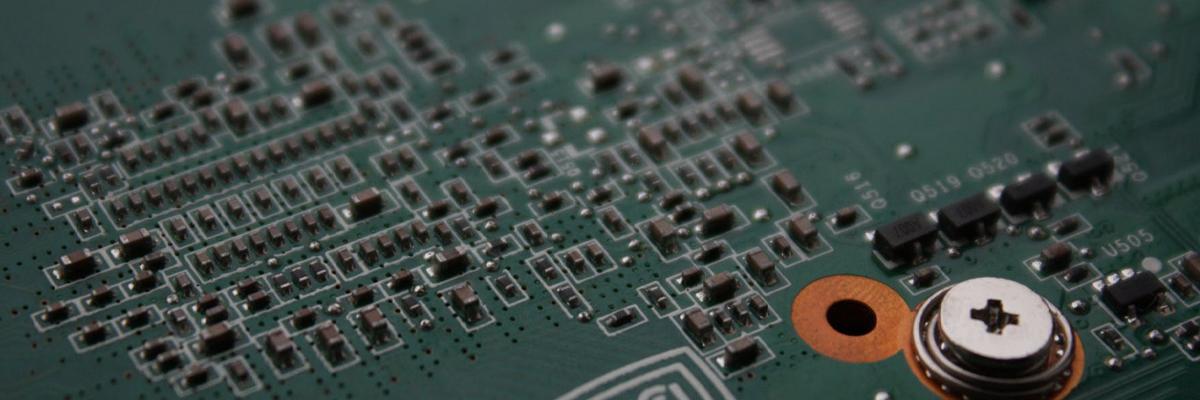An Overview of Teflon PCB Manufacturing

An Overview of Teflon PCB Manufacturing
Over the years, various PCB substrates have gained popularity in the market, owing to their specific advantages. Polytetrafluoroethylene, commonly referred to as PTFE and known by its commercial name Teflon, is one of them. Teflon is the trademark of DuPont. The material has an inert molecular structure and is non-sticky, which makes it an ideal choice for non-stick applications. Over the years, Teflon has become an integral part of complex electronic devices, owing to its low dissipation factor and other beneficial properties such as excellent electrical properties, high heat and cold resistance, excellent chemical resistance, and low coefficient of friction. Although this PTFE material is machined in a similar manner as other FR4 laminates, there are certain things that Teflon PCB manufacturers need to keep in mind. This post discusses these points in detail.
Teflon PCB Manufacturing: Things You Must Know About It
Teflon PCB manufacturers need to be extra careful when working with PTFE laminates due to the typical properties of the material. Unlike the regular FR4 PCB material, most PCB laminates require special processes and equipment to develop reliable PCBs. The following factors will help you understand it better.
-
Surface Preparation: This is an important requirement in the PCB industry. The surface of a substrate is prepared for marking, layer formation, and metallization. When working with PTFE substrates, the PCB manufacturer has to be extra careful about the type of equipment used for the surface preparation, owing to its soft nature. For instance, they cannot use pumice scrubbers, composite brushes, or bristles during surface preparation as they can distort the soft laminate dimensionally. PTFE surface preparation is usually performed using plasma gas cycling or sodium etchants:
-
Hydrogen is used for plasma gas recycling owing to its small atomic nucleus as well as its ability to remove fluorine through a strong reaction.
-
Sodium etchants can increase hold times post-processing, and they can assure complete stripping of fluorine atoms from the surface.
-
Drilling: The use of a new tool is recommended when drilling PTFE substrates laminated with copper. The tool must be used with slow infeed, and at a high chip load. This helps eliminate laminate fibers and PTFE tailing easily. Most times, PCB fabricators opt for ceramic-filled laminates, because they are easy to drill. The material has a better coefficient of thermal expansion and dielectric constant than their copper laminated counterparts.
-
Copper Plating: Copper plating of ceramic loaded with high dielectric constant laminates and PTFE demands special consideration. The PTFE laminates that are pure possess a high Z-axis CTE; so, it becomes necessary to use plated copper on thru-hole walls. The plated copper must have high tensile strength, too. This is because copper with a high tensile strength has high ductility, which helps reduce the chances of barrel cracks, pad lifts, as well as blistering on the PTFE material, which low modulus of elasticity.
-
Lamination: Unlike FR4 laminates, PTFE substrates do not need oxide pretreatment. Copper films and PTFE can be laminated at pressures of 450-500 psi and temperatures 700F, without using pre-pegs or bonding films. At times, Teflon PCB manufacturers are known to use pre-preg or bonding films of low melting point to reduce the processing temperatures up to 250˚F or 425˚F. PTFE-FR4 laminates are also used in some applications, however, these require oxide pretreatment.
-
Solder Mask: The solder mask must be applied within 12 hours of etching the PTFE laminate. To improve the adhesion, Teflon PCB manufacturers process the etched substrate through a sodium etch cycle or the standard PTFE plasma cycle. Baking the ceramic-loaded PTFE laminates prior to the application of solder mask also helps wipe out residual moisture.
-
Handling and Storage: PTFE laminates are much softer than their FR4 counterparts; so, they need extra care in their handling and storage. It is always recommended to store them in a cool and dry place, and away from the sunlight to avoid contamination and surface oxidation.
Are you planning to outsource your high frequency Teflon PCB project? If yes, it is important that you work with a trusted Teflon PCB manufacturer like Twisted Traces. The company has invested in technologies that enables it deliver performance-driven Teflon PCBs to its clients.
.png)


.png)